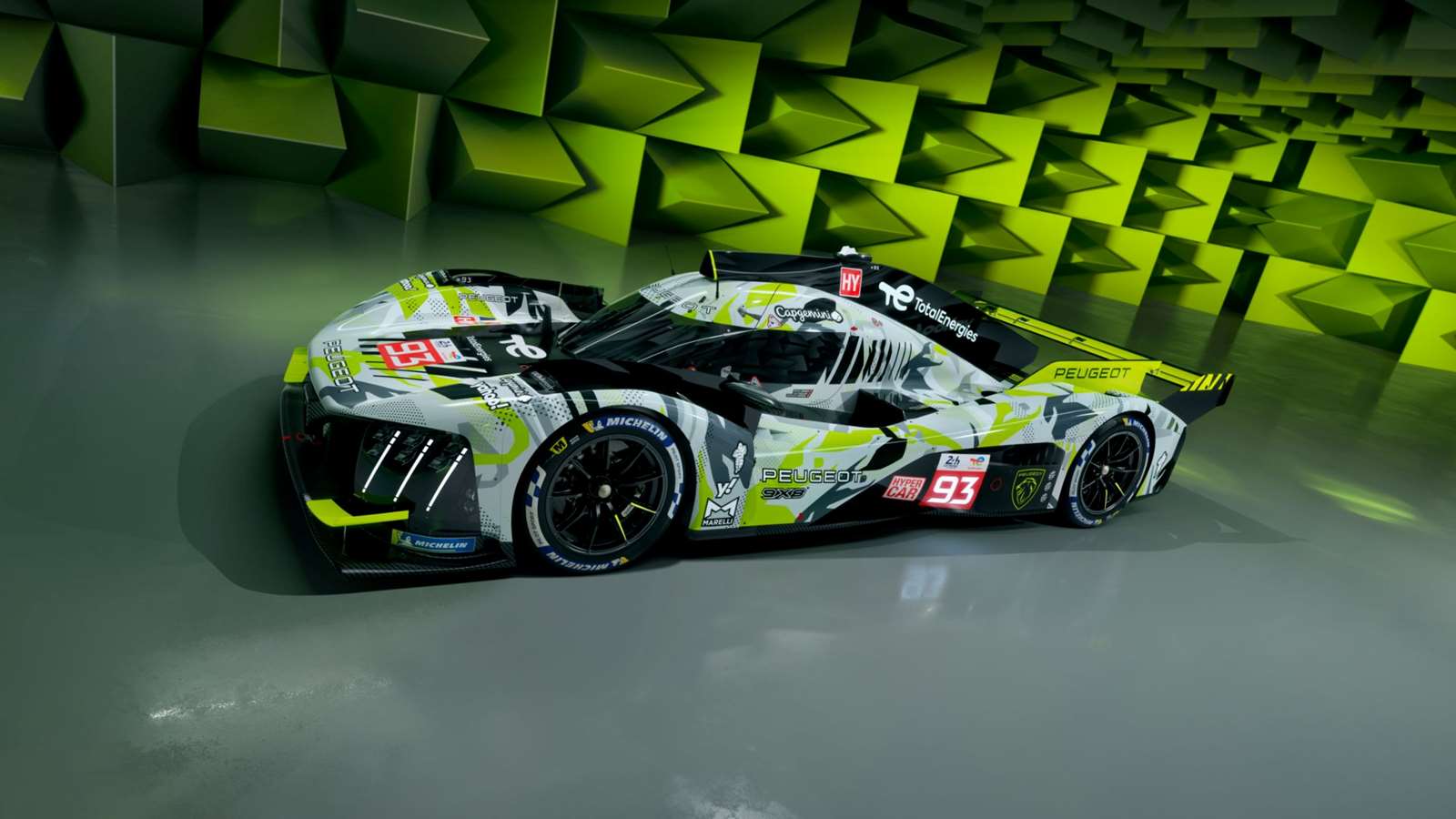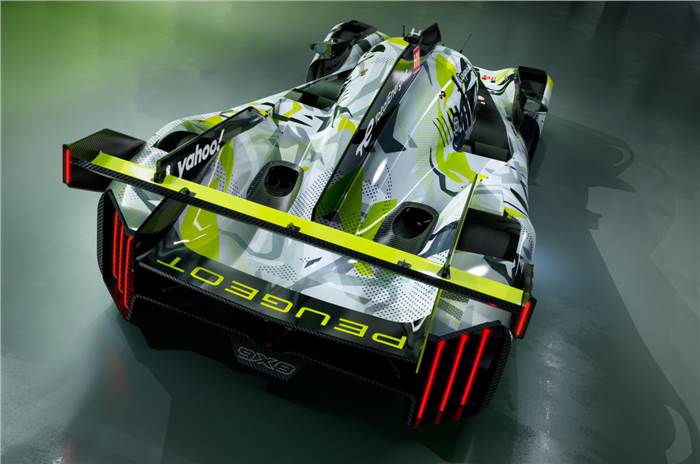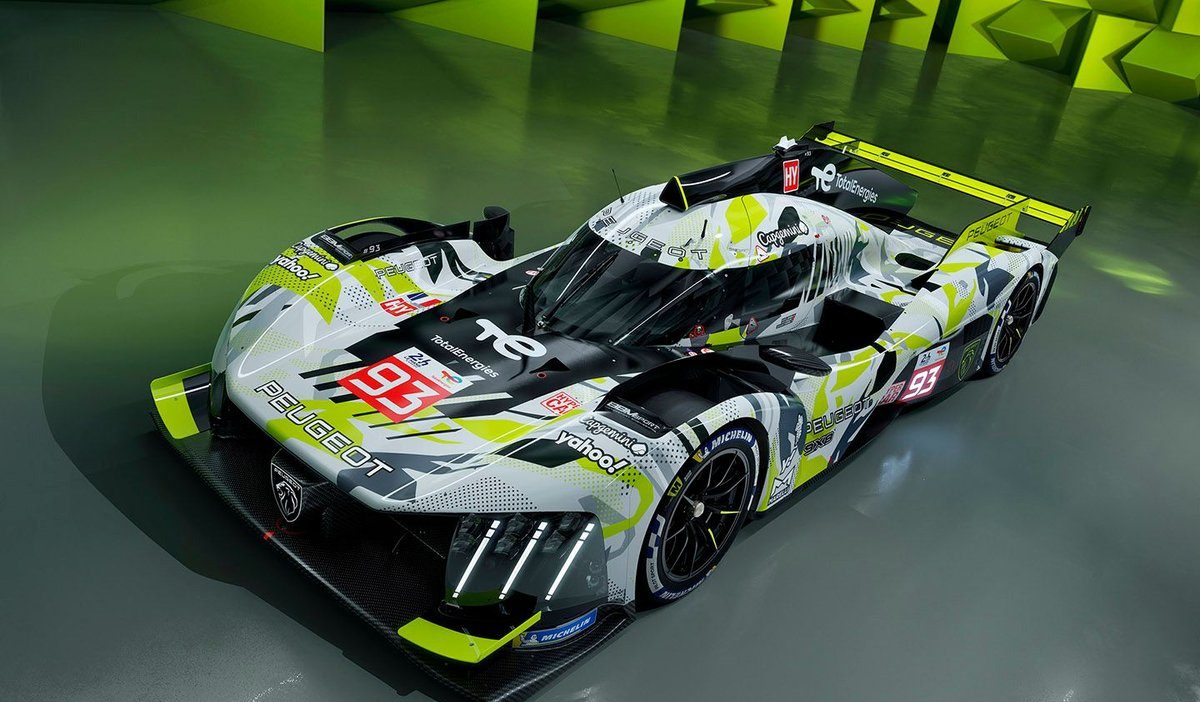The unveiling of the 9X8 2024 car in its new livery showcases a familiar yet refined design, featuring a conventional rear wing that sits lower on the vehicle’s frame. This latest iteration maintains the essence of its predecessor, which made its debut in the final races of the 2022 season.
The addition of the rear wing, a feature not previously confirmed by Peugeot, comes alongside the manufacturer’s decision to depart from the equal-width front and rear tires seen in the initial model. Instead, the 9X8 now sports 29cm tires at the front and 34cm at the rear, aligning with the standards of its competitors in the WEC’s Hypercar class.
This shift in tire dimensions has prompted a significant reworking of the innovative concept behind the LMH (Le Mans Hypercar). Previously, the 31/31 tire setup allowed Peugeot to achieve a balanced 50/50 front/rear weight distribution, with most of the car’s downforce generated from the underfloor, eliminating the need for a traditional rear wing.

With the adoption of revised tire dimensions, the car’s weight distribution has shifted rearward, necessitating a redistribution of downforce to upper body surfaces, including the newly introduced rear wing.
Olivier Jansonnie, Peugeot Sport’s technical director, highlighted the extensive modifications undertaken by his design team, emphasizing that while the car may appear largely unchanged to the public, nearly all surfaces have been refined to accommodate the new aerodynamic concept.
Crucially, the 9X8 2024 retains the monocoque and crash structures of its predecessor, a decision driven by the desire to avoid additional crash testing during homologation. Jansonnie noted the challenge of integrating the new rear wing while preserving existing structural elements, emphasizing the importance of maintaining schedule commitments.

The rearward shift in weight distribution has also enabled revisions to the car’s 2.6-liter twin-turbo V6 engine and seven-speed gearbox, aimed at enhancing reliability. Jansonnie revealed that the decision to undertake such a comprehensive overhaul was made following the 2023 Sebring 1000 Miles season-opener, with testing of prototype cars on the new tires initiated the subsequent summer.
Peugeot’s motivation for overhauling the 9X8 stemmed from a desire to reduce reliance on the Balance of Performance (BoP) regulations, which they cannot control. By aligning the car’s concept more closely with competitors’, Peugeot aims to achieve competitive performance irrespective of BoP adjustments.
Details regarding the utilization of the five permitted evo joker performance upgrades over the 9X8’s lifecycle remain undisclosed by Peugeot, leaving the extent of revisions for 2024 undisclosed.

